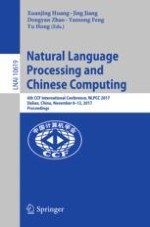2018 | OriginalPaper | Chapter
Homographic Puns Recognition Based on Latent Semantic Structures
Authors : Yufeng Diao, Liang Yang, Dongyu Zhang, Linhong Xu, Xiaochao Fan, Di Wu, Hongfei Lin
Published in: Natural Language Processing and Chinese Computing
Publisher: Springer International Publishing
Activate our intelligent search to find suitable subject content or patents.
Select sections of text to find matching patents with Artificial Intelligence. powered by
Select sections of text to find additional relevant content using AI-assisted search. powered by
